Patient-Centered Care
- Patient-centered care is a type of health care where the respect for the patient is the key principle.
- In this system, the patient’s lifestyle, needs, desires, preferences and values are in the center of the clinical practice (Sine & Sharpe 2011).
- All the information related to health issues and the patient’s needs is openly shared with the patient.
- The patient is a vital member of the health care team (which also includes the members of their family and health care specialists), and the key decision maker (Shuss et al. 2015)
- This system is based on the principle of the autonomy of an individual (Sine & Sharpe 2011), and recognizes the patient’s right to decide what is to be done regarding their health. The patient is an active subject of the medical care process, not just a passive receiver.
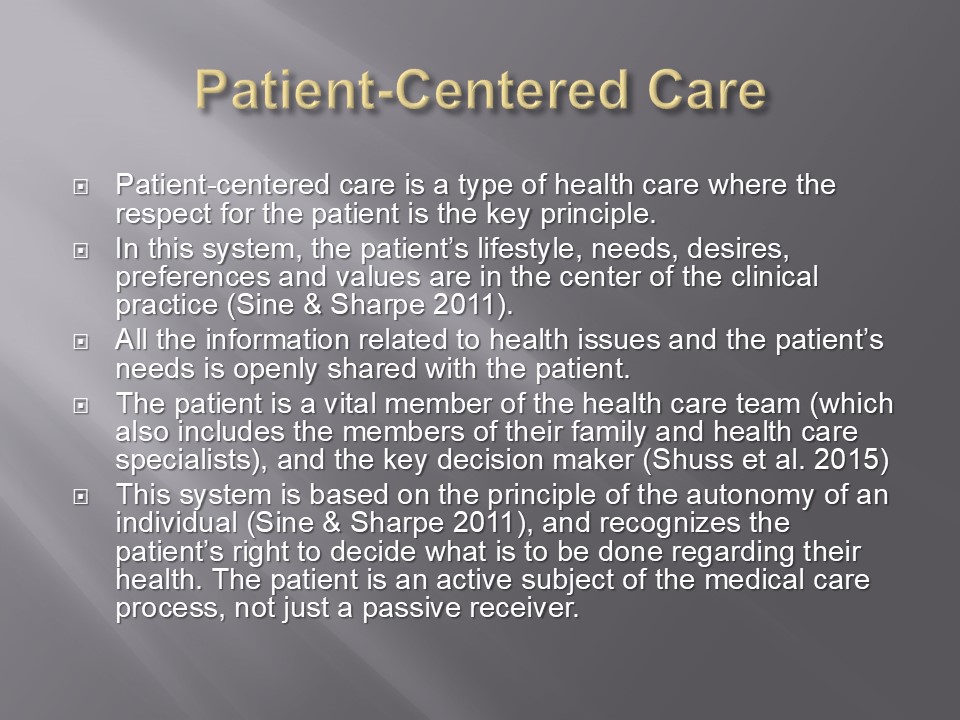
Patient Safety and Risk Management
- Patient safety is a conception according to which it is crucial to ensure that the patient remains unharmed in the process of treatment, and that conditions threatening their health and their life are addressed quickly and properly.
- It involves the creation of an effective medical routine, the implementation of an appropriate organizational culture, and the provision of adequate training for the members of the health care personnel (Young 2014).
- Risk management is one of the key elements of patient safety.
- It involves the identification of the risks and dangers for the patient, and the formulation and implementation of a proper response to them.
- Noteworthy, these risks may be related not only to the patient’s condition but also to the medical procedures and routines. An ineffective routine (for instance, ambiguous prescriptions) may also pose a danger to the patient (Anthony 2014).
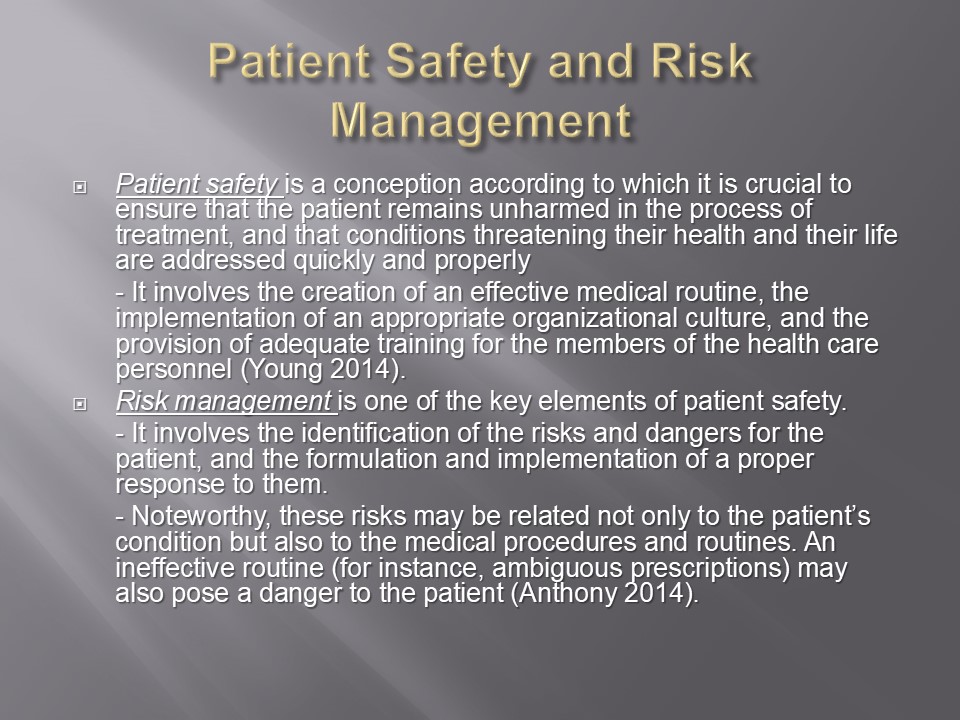
Conflicts between Patient-Centered Care, Risk Management, and Patient Safety
The adherence to the principles of patient-centered care may in certain cases be inconsistent with some considerations related to the issues of patient safety.
For instance, a seriously ill person may refuse to go to hospital, putting oneself in danger due to inability of medics to provide the same level of health care at home as can be supplied in hospital (Sine & Sharpe 2011).
Some patients may be unwilling to use the optimal methods of medical treatment due to a variety of reasons (poor communication with medical staff, misunderstanding of medical procedures, the patient’s personal preferences or prejudice, etc.).
Other patients may have conditions which make the implementation of the principles of patient-centered care impossible (e.g., psychiatric conditions).
These situations are challenging for the health care staff, and require that ethical decisions are made (Sine & Sharpe 2011).
The main principle of patient-centered care – that the patient is the main member of the health care team and the key decision-maker – is limited by the patient’s ability to make decisions.
In certain cases, this ability may be rather questionable or even absent (e.g., in psychiatric settings).
In other cases, this ability is difficult to assess, as the criteria may be vague and poorly applicable to a concrete situation.
In addition, this ability often does not remain stable (for instance, if a patient’s health condition becomes worse), and sometimes needs to be re-assessed (Sine & Sharpe 2011).
Therefore, the considerations related to patient safety may require that the patient does not make the key decisions related to their health; the decisions are instead made by their family, or, sometimes, the medics.
Unintended consequences of the patient-centered care, as well as of the concentration of the accountability for risk management and patient safety, also pose a problem.
The need to include the patient as a key member of the health care team may create additional workload for medics.
Strict accountability of health care staff and the risks they face may stimulate them to act in ways that minimize their personal risks, but are not beneficent for patients.
For instance, a study in a psychiatric setting in Sweden showed that doctors together with unit managers tried to refuse accepting problematic patients to avoid personal and organizational responsibility for their health (Andersson & Liff 2012).
Thus, attempts to promote patient safety may create additional, unintended risks for the patient.
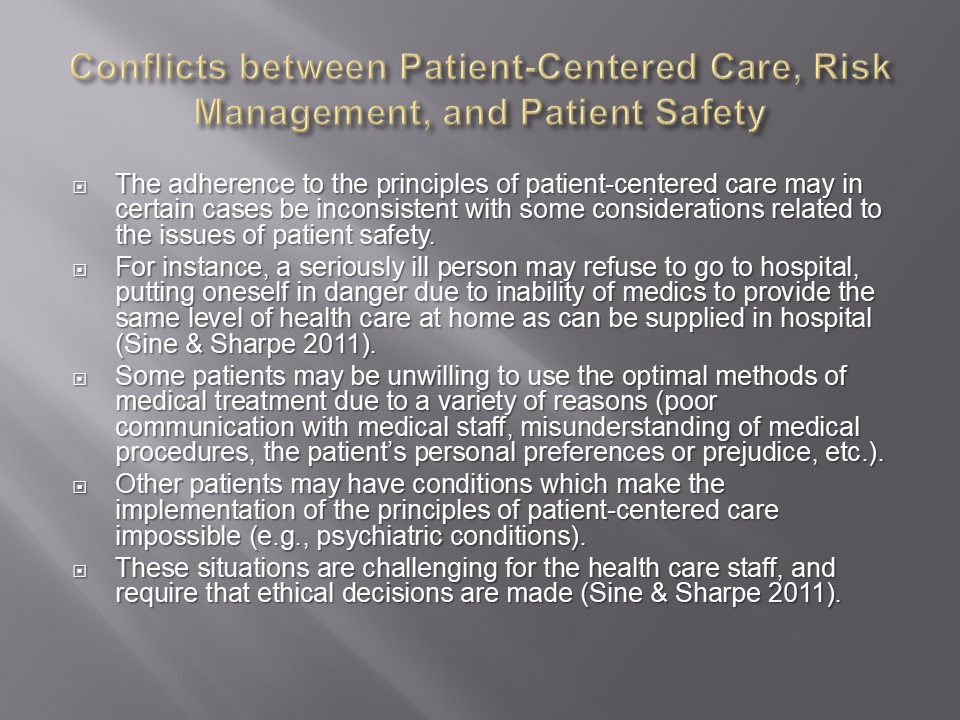
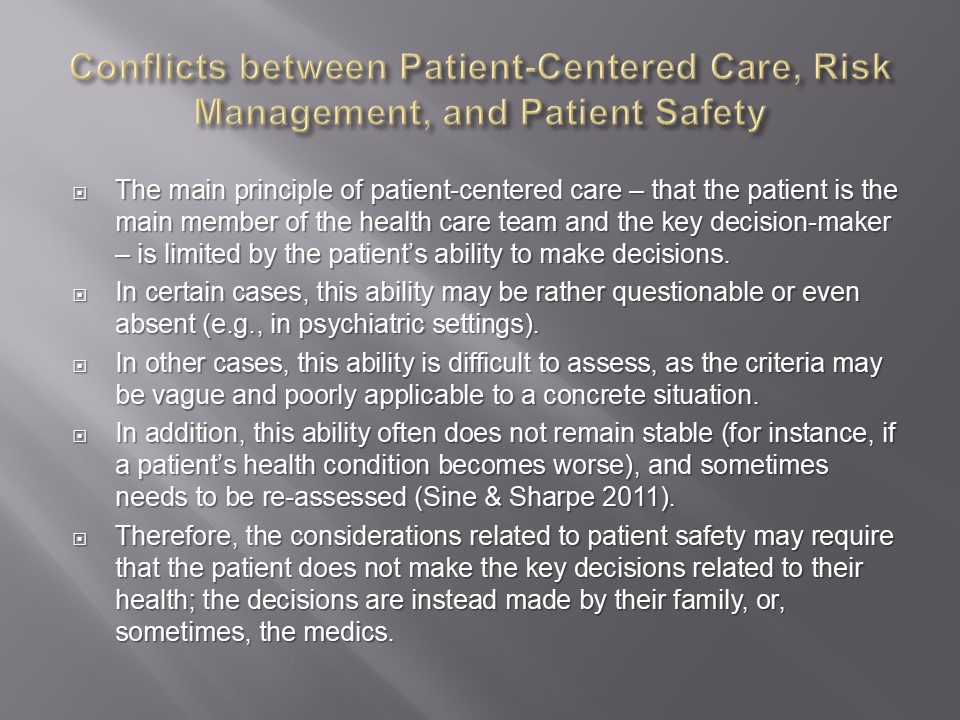
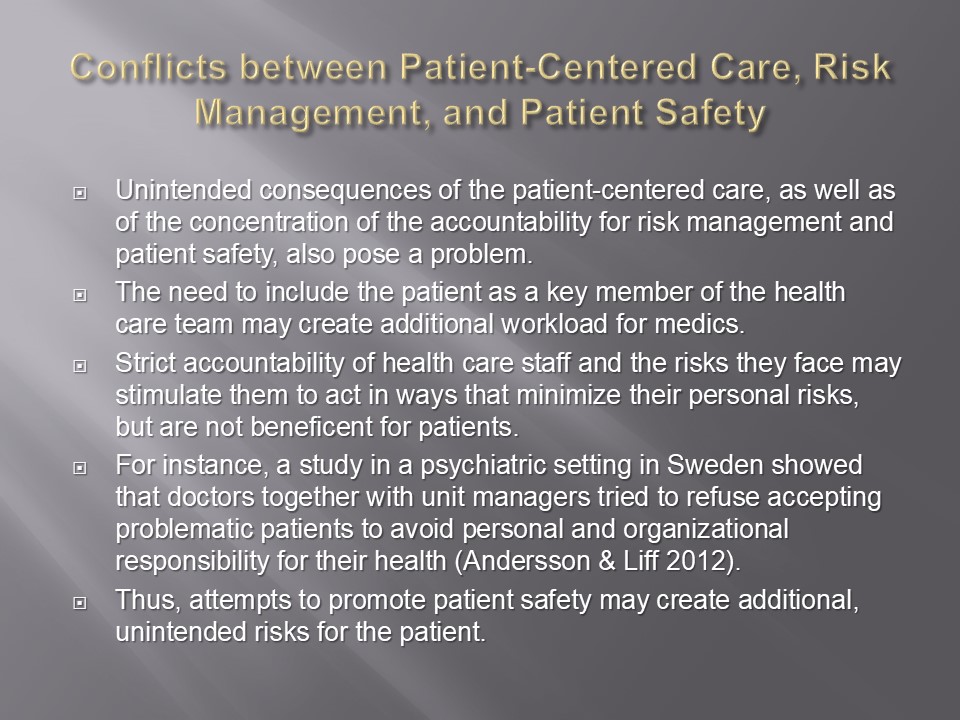
Further Discussion and Conclusions
Therefore, there are a number of hidden pitfalls related to the combined implementation of patient-centered care, patient safety, and risk management.
However, it is clear that the principles of patient safety and risk management need to be core elements of any health care practice, for negligence of these results in adverse patient outcomes (Anthony 2014).
Also, it has been shown that patient-centered care (including the shared decision-making) usually leads to improved patient outcomes due to better knowledge of health issues, a greater number of decisions made according to the actual needs and desires of the patient, and enhanced patient activity; it may also partially address the problem of over-treatment (Barry & Edgman-Levitan 2012).
Thus, it may still be advised to continue implementing the principles of all the three doctrines (patient-centered care, patient safety, and risk management).
However, additional research of concrete practices and their results at the micro level are needed in order to uncover and address the pitfalls and inconsistencies which emerge in real health care situations (Andersson & Liff 2012).
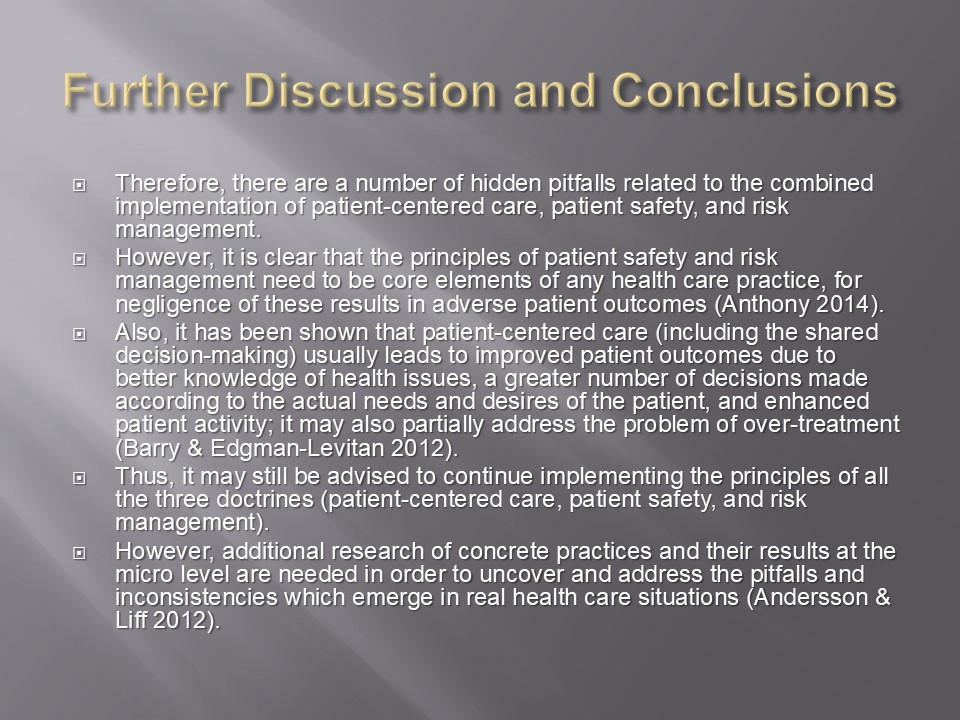
Reference List
Andersson, T & Liff, R 2012, ‘Does patient-centred care mean risk aversion and risk ignoring?,’ International Journal of Public Sector Management, vol. 25, no. 4, pp. 260-271.
Anthony, M 2014, ‘Patient Safety,’ Home Healthcare Nurse, vol. 32, no. 7, pp. 389-390.
Barry, MJ & Edgman-Levitan, S 2012, ‘Shared decision making – the pinnacle of patient-centered care,’ The New England Journal of Medicine, vol. 366, no. 9, pp. 780-781.
Shuss, S, Lockhart, L, Kelton, D & Davis, C 2015, ‘Patient-centered care pointers,’ Nursing Made Incredibly Easy, vol. 13, no. 3, pp. 20-27.
Sine, D & Sharpe, V 2011, ‘Ethics, risk, and patient-centered care: how collaboration between clinical ethicists and risk management leads to respectful patient care,’ Journal of Healthcare Risk Management: the Journal of the American Society for Healthcare Risk Management, vol. 31, no. 1, pp. 32-37.
Young, L 2014, ‘Patient safety,’ Nursing Standard, vol. 28, no. 25, p. 54.